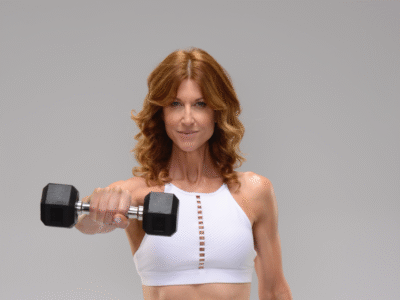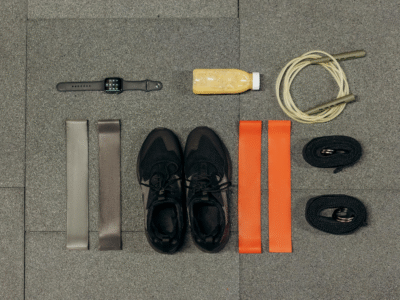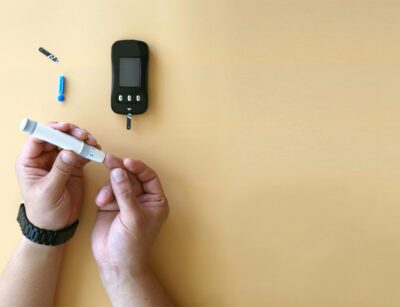As if women didn’t already face impossible beauty standards, a new insecurity has just dropped.
‘Cortisol face’ has recently taken TikTok by storm, with content creators sharing ‘before and after’ videos of their faces.
But what exactly is cortisol face, and should we be taking this new wellness craze seriously or, rather, should we be questioning whether judging a person’s health by the face is simply body shaming in a new guise?
Living360 talks to beauty and mental health experts to get a better understanding of the phenomenon and banish misconceptions.
@witnesswellness Post coming soon that summarises all the top tips that helped me 🤓 Gua sha, facial reflexology & magnesium bicarbonate water were the biggest game changers though…thats why im so passionate about them ⚡️ #cortisolimbalance #highcortisol #moonface #puffyface
What is cortisol face?
Also known as ‘moon face’ or Cushing’s syndrome, the condition is characterised by swelling, puffiness and weight gain around the face.
Rhysa Phommachanh explains: “Cortisol, often referred to as the stress hormone, is produced by the adrenal glands and released in response to prolonged stress. When cortisol levels remain elevated over time, it can lead to physical changes, one of which is often termed ‘cortisol face’.”
Cortisol plays a crucial role in regulating various bodily functions. Dr Paul Banwell explains: “Cortisol is needed to regulate our natural bodily functions such as our metabolism, sleep and immune function.
“Cortisol regulates your metabolism by helping control how your body uses fats, proteins and carbohydrates for energy. When cortisol is released, it signals to your body to use stored glucose as an energy source, as well as converting fats, proteins and carbohydrates into usable energy. This means you have a burst of energy to combat whatever stressor has caused the ‘fight or flight’ response.”
However, when cortisol levels remain high for extended periods, it can have negative effects on the body, including the face.
As well as cortisol face, plastic surgeon Dr Banwell warns high levels of cortisol can lead to other harmful side effects.
Dr Banwell says: “If left unchecked, raised cortisol levels can lead to weight gain and inflammation, especially around the midsection and rounding of the face, acne, muscle weakness, fatigue, difficulty concentrating, anxiety and depression, altered sleep, increased appetite, and high blood pressure, to name a few.”
How to lower cortisol levels
TikTok is currently rife with wellness influencers saying particular teas and supplements will treat cortisol face, or that gua sha is the key to reducing puffiness. Although these may have a small change on the appearance of your face (gua sha can help with lymphatic drainage, making the face appear slimmer, for example), you’ll never banish the bloat unless you address the core issue: stress.
Read more: 3 sleep meditation techniques for a good night’s rest

Elle Mace, a psychology coach and body image expert, says there are five key things to consider when looking to lower cortisol. As well as regularly exercising and practicing mindfulness, our sleep, diets and daily activities can make a huge difference.
Elle explains: “Ensuring adequate sleep is crucial, as poor sleep can elevate cortisol levels, so maintaining a consistent sleep schedule and creating a restful environment is important.
“Additionally, a balanced diet rich in whole foods, particularly those high in omega-3 fatty acids, can help regulate cortisol levels, while reducing caffeine and sugar intake can prevent unnecessary spikes in this hormone.
“Finally, nurturing positive social connections and engaging in activities that bring joy and relaxation, such as hobbies or spending time in nature, can effectively lower cortisol, promoting a healthier, more balanced life.”
Rhysa, health expert at Landys Chemist, adds: “The focus should be on understanding the underlying stress factors and promoting self-care rituals that encourage a more calming lifestyle”
Is cortisol face another form of fatphobia?
While addressing cortisol face can be a valid concern, if you search the term on TikTok you’ll find countless videos with the same line: “You’re not ugly, your cortisol levels are just high.”
And while the main hook of these videos is a round or puffy face, we have to question the morality of equating weight gain to being ugly.
Elle warns: “The concept of cortisol face is yet another manifestation of fatphobia and body shaming, subtly reinforcing harmful stereotypes about body size and appearance.
“By treating natural differences in facial features and body weight as medical problems, it reinforces the idea that some physical traits are automatically undesirable or signs of poor health. This idea often ignores the complex factors that contribute to a person’s appearance and instead, focuses on blaming individuals for not conforming to narrowly defined beauty standards.
“Ultimately, labelling and shaming people based on their appearance, under the guise of concern for health, continues the cycle of fat phobia and undermines efforts to promote body positivity and acceptance.”
Read more: The best apps for support with anxiety & stress
@hydrationceo “Cortisol face” is just fatphobia rebranded to sell you some sh*t you don’t need. BE NICE TO YOURSELF!! 😡💕 #cortisolface #cortisol #cortisollevels #skincare #selfcare #selflove #confidencejourney #skincare ♬ original sound – HydrationCEO
Rhysa adds: “The changes in appearance caused by cortisol are a natural response to stress and should not be a source of shame.
“Often, individuals who experience these symptoms can further exacerbate stress as ‘cortisol face’ may negatively impact mental health.”
Ultimately, addressing cortisol face — or any appearance-related concern — should be about promoting health and wellbeing rather than conforming to societal beauty standards.
Ironically, it seems unhealthy conversations around cortisol face may actually be raising the levels of cortisol in our bodies.
It’s time to shift the conversation away from appearance-based judgments and towards a broader understanding of health that values diversity in body types and recognises the complex interplay of factors that influence our wellbeing. In doing so, we can create a more supportive and inclusive environment for everyone.













